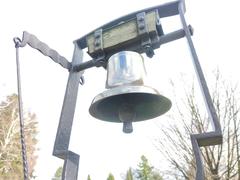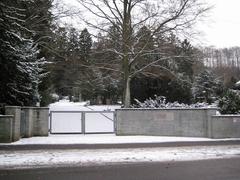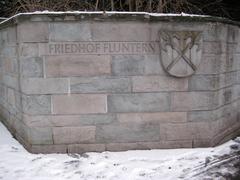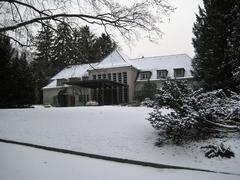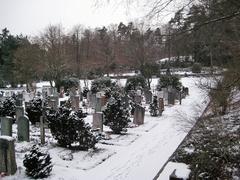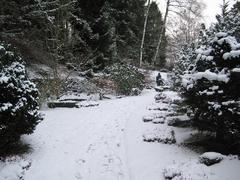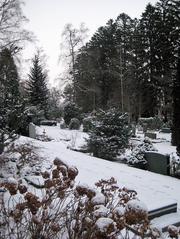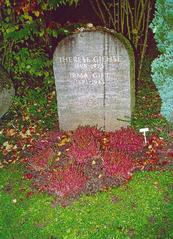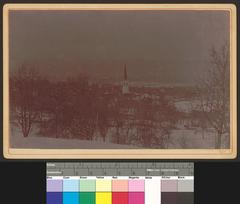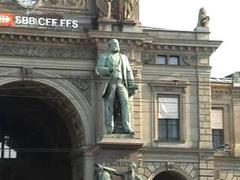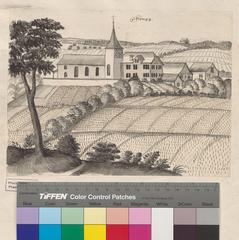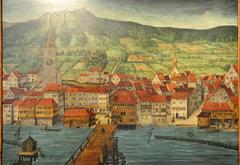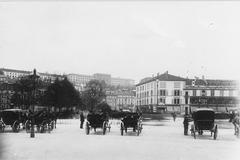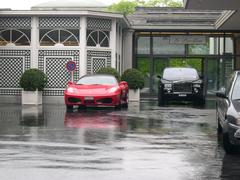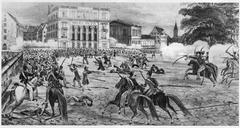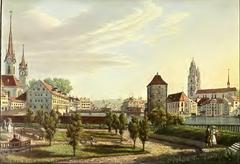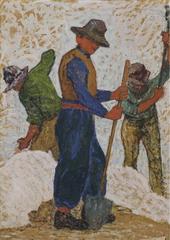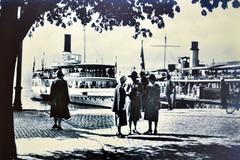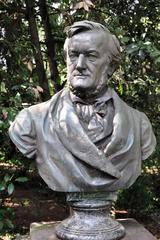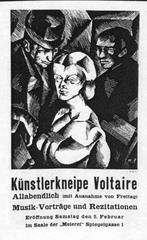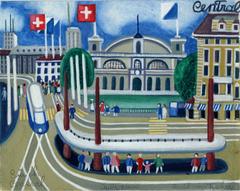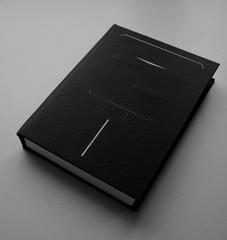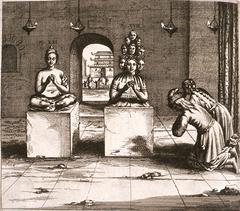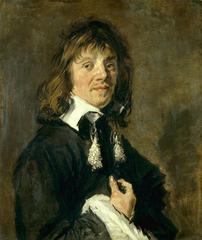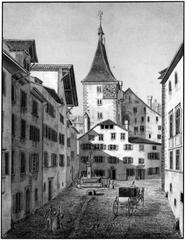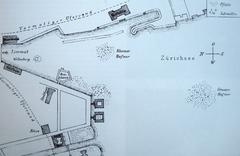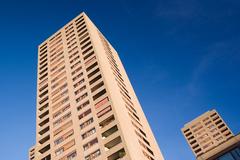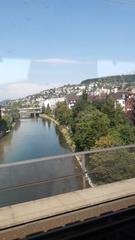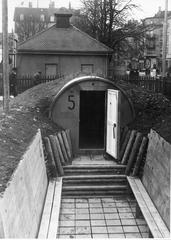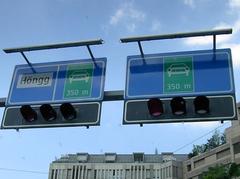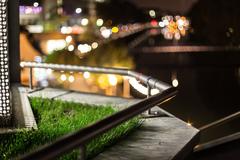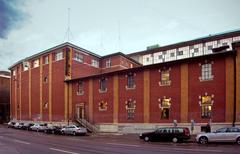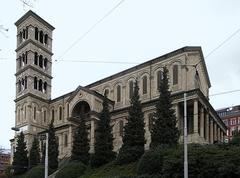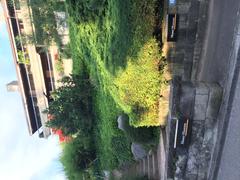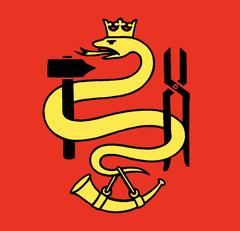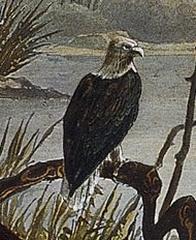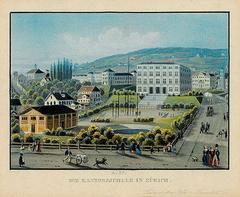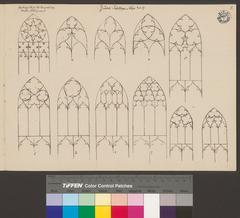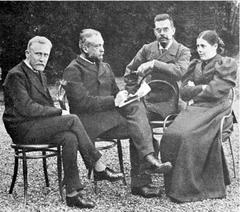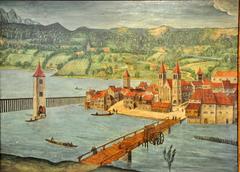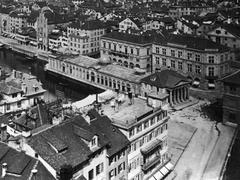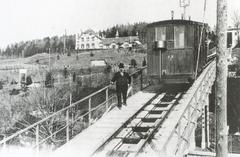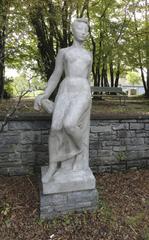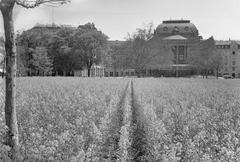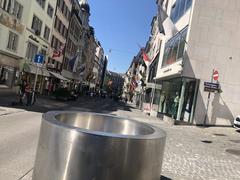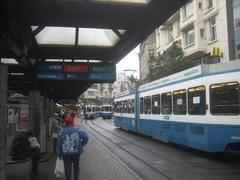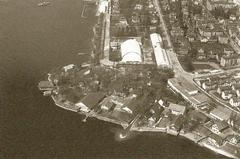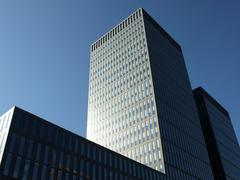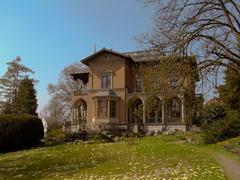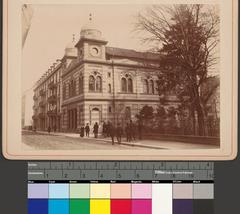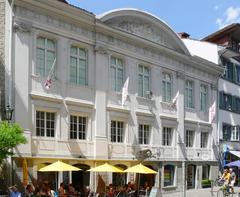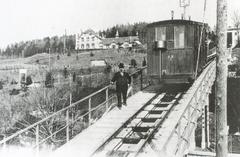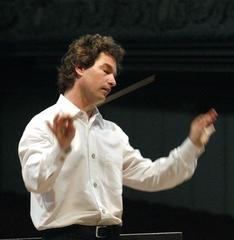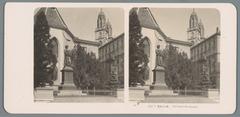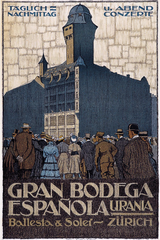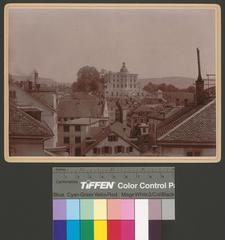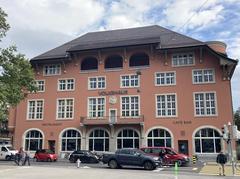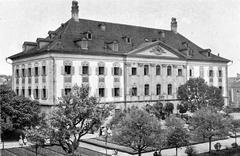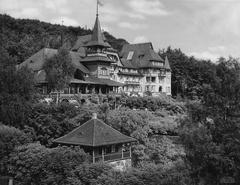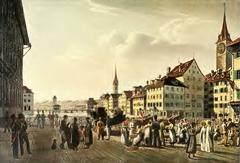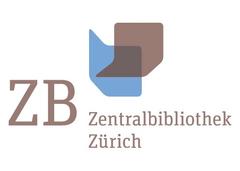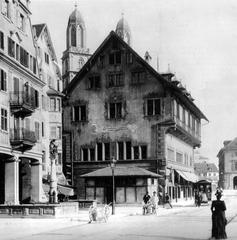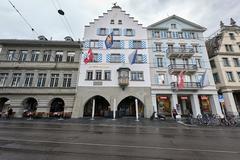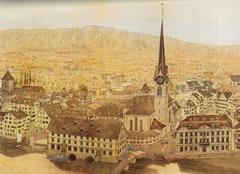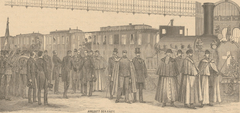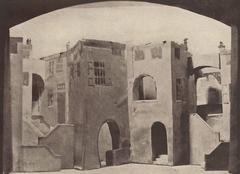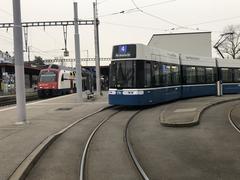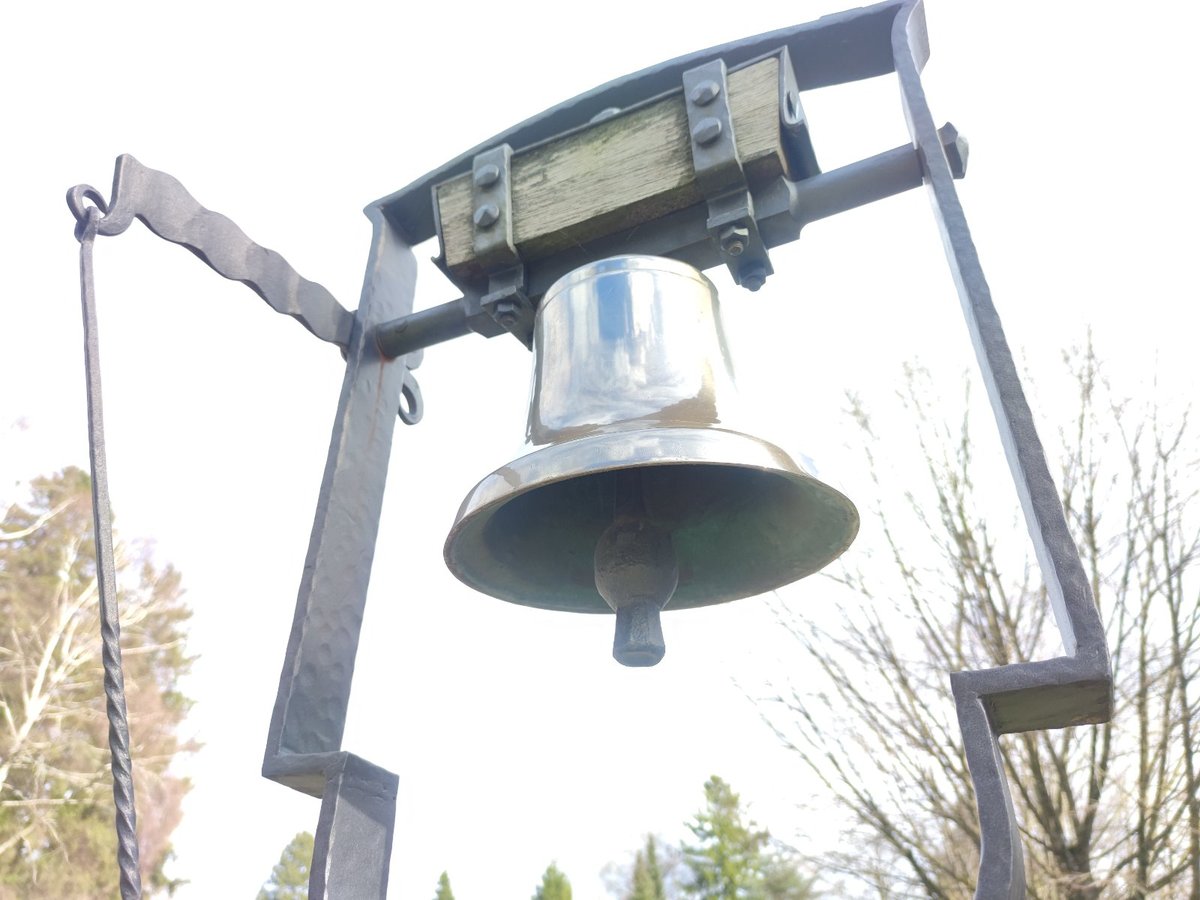
Fluntern Cemetery: Visiting Hours, Tickets, and Historical Significance in Zürich
Date: 15/06/2025
Introduction
Fluntern Cemetery (Friedhof Fluntern), located atop the peaceful Zürichberg hill in the Fluntern district, is a unique blend of historical, cultural, and natural significance. Established in 1887, the cemetery spans over 33,000 square meters, combining formal Baroque-inspired layouts with tranquil woodland landscapes. More than just a burial ground, Fluntern Cemetery serves as a window into Zürich’s rich heritage and is internationally recognized for hosting the graves of eminent literary, scientific, and artistic figures, most notably James Joyce.
As both a place of quiet reflection and an active participant in Zürich’s cultural life, Fluntern Cemetery draws visitors seeking to explore Swiss burial traditions, monumental sculpture, and the city’s intellectual legacy. With free daily admission, wheelchair-accessible paths, and proximity to major attractions like the Zürich Zoo, the cemetery is a rewarding destination for tourists and locals alike.
For the most up-to-date details on opening hours, directions, events, and notable graves, refer to official Zürich tourism and heritage resources (Zürich Tourism, Zürich James Joyce Foundation, Stadt Zürich Friedhöfe).
Table of Contents
- Overview and Historical Background
- Architectural Features and Landscape
- Notable Burials and Artistic Heritage
- Visitor Information
- Guided Tours and Special Events
- Accessibility and Visitor Tips
- Nearby Attractions
- Frequently Asked Questions (FAQ)
- Conclusion and Travel Tips
- References
Overview and Historical Background
Origins and Development
Fluntern Cemetery was founded in 1887 to address the needs of a growing Zürich population, replacing the smaller “Platte” cemetery (1787–1886). Designed with Baroque-inspired axial symmetry, its original layout offered space for mourning within a dignified, orderly environment. After Fluntern’s incorporation into Zürich in 1893, planned closure was prevented by local advocacy, resulting in several expansions (1907, 1928, 1948/49) that reflect evolving cemetery philosophies. The site now seamlessly integrates formal design with natural woodland.
Key Dates at a Glance
- 1787: Platte cemetery established.
- 1886: Platte cemetery closed.
- 1887: Fluntern Cemetery founded.
- 1893: Fluntern district incorporated into Zürich.
- 1907, 1928, 1948/49: Major expansions and landscaping enhancements.
- 33,250 m²: Current area.
Architectural Features and Landscape
Fluntern Cemetery’s landscape blends formal axes with curving woodland paths, offering both structured beauty and natural serenity. The site includes:
- Chapel (seating ~100 people)
- Mortuary hall
- Cemetery administration and caretaker’s residence
- Dedicated areas for urn burials and family graves
- Sculptures and memorial art reflecting both traditional and modernist influences
The cemetery’s proximity to Zürich Zoo and Zürichberg forest further enhances its tranquil atmosphere.
Notable Burials and Artistic Heritage
Literary and Intellectual Figures
- James Joyce (1882–1941): The Irish novelist’s grave, marked by Milton Hebald’s bronze statue, is a pilgrimage site for literary enthusiasts. Joyce’s wife, Nora Barnacle, and son, Giorgio, are buried nearby. Bloomsday (June 16) attracts global visitors (Zürich Tourism, Irish Times).
- Elias Canetti (1905–1994): Nobel Prize-winning author interred in a modest grave (Nobel Prize).
- Leopold Ružička (1887–1976): Nobel laureate in Chemistry, commemorated for his scientific achievements (Nobel Prize).
Artists, Musicians, and Scientists
- Paul Bodmer (1886–1983): Renowned Swiss painter and muralist (Kunsthaus Zürich).
- Therese Giehse (1898–1975): Prominent German actress (Munich Kammerspiele).
- Paul Karrer (1889–1971): Nobel laureate in Chemistry (Nobel Prize).
- Albert Heim (1849–1937): Influential Swiss geologist (ETH Zürich).
- Friedrich Hegar (1841–1927): Composer and Tonhalle Orchestra founder (Tonhalle Zürich).
- Emil Abderhalden (1877–1950): Biochemist (ETH Zürich).
- Otto Klemperer (1885–1973): Renowned conductor (Oxford Music Online).
Artistic Features
- James Joyce Statue: The 1966 bronze by Milton Hebald, seated and contemplative, captures Joyce’s enduring literary presence.
- Gravestone Symbolism: Many markers feature motifs reflecting the deceased’s profession or passions, such as books, musical notes, or chemical symbols.
- Art Nouveau and Modernist Gravestones: Older sections display Jugendstil flourishes, while newer graves embrace minimalist design (Swiss Art Guide).
Visitor Information
- Opening Hours: Generally 7:00 am to 7:00 pm (may vary seasonally).
- Admission: Free; no tickets required.
- Accessibility: Wheelchair-accessible paved paths in main areas, though some sloped sections may require assistance.
- Transport: Tram line 6 to “Zoo” or Fluntern stops; buses 33 and 912 also nearby. Limited parking available.
- Facilities: Chapel for services, benches and pavilions for rest. Public restrooms are not always available.
- Maps & Signage: Limited on-site; download maps or inquire at Zürich tourist offices.
For official information and updates, check Stadt Zürich Friedhöfe.
Guided Tours and Special Events
- Bloomsday (June 16): Annual celebration of James Joyce, with readings and performances at the cemetery and across Zürich.
- Guided Tours: Offered periodically by the Zürich James Joyce Foundation and local organizations, highlighting the cemetery’s history and notable graves (Zürich James Joyce Foundation).
- Special Installations: Seasonal art and floral displays during events like All Saints’ Day (Zürich Events).
Accessibility and Visitor Tips
- Wheelchair Access: Most main paths are paved and accessible.
- Best Visiting Times: Early morning or late afternoon for tranquility and photographic light.
- Etiquette: Maintain quiet, respectful behavior; photography is allowed, but avoid photographing mourners or ceremonies. Dogs must be leashed.
- Seasonal Considerations: Spring/summer showcase flowers and greenery; autumn offers colorful foliage; winter is quiet and contemplative.
Nearby Attractions
- Zürich Zoo: Adjacent to the cemetery, ideal for families.
- Zürichberg Forest: Nature trails for hiking and walking.
- City Center: Accessible by tram for further exploration.
- James Joyce Foundation: Literary library and events in central Zürich.
Frequently Asked Questions (FAQ)
Q: Are there entrance fees?
A: No, admission is free.
Q: What are the opening hours?
A: Usually 7:00 am to 7:00 pm, with seasonal adjustments.
Q: Is the cemetery wheelchair accessible?
A: Yes, though some paths have gentle slopes.
Q: Can I take photographs?
A: Yes, for personal use; be discreet and respectful.
Q: Are guided tours available?
A: Periodically, through local organizations and the James Joyce Foundation.
Q: How do I find specific graves?
A: Consult online resources or ask at the cemetery office.
Conclusion and Travel Tips
Fluntern Cemetery stands as a testament to Zürich’s dedication to memory, culture, and nature. Its harmonious blend of meticulously maintained grounds, artistic monuments, and historical significance offers a deeply reflective experience. Whether drawn by the graves of international luminaries like James Joyce or by the cemetery’s quiet beauty, visitors will find a unique connection to Zürich’s heritage.
Travel Tips:
- Plan ahead: Research notable burials and cemetery maps.
- Allow at least an hour for your visit.
- Combine your visit with nearby attractions for a full cultural experience.
- For interactive maps and updates, download the Audiala app.
For comprehensive details, consult Zürich Tourism, Zürich James Joyce Foundation, and Stadt Zürich Friedhöfe.
References
- Zürich Tourism: Fluntern Cemetery
- Zürich James Joyce Foundation
- Stadt Zürich Friedhöfe
- Kunsthaus Zürich
- Munich Kammerspiele
- Nobel Prize: Elias Canetti
- Nobel Prize: Leopold Ružička
- Nobel Prize: Paul Karrer
- ETH Zürich
- Tonhalle Zürich
- Oxford Music Online
- Swiss Art Guide
- Zürich Events
- Find a Grave: Friedhof Fluntern
- Culture and Crafts: Fluntern Cemetery
- Unistica: Cemetery Fluntern
- ZVV Public Transport
For more travel inspiration, download the Audiala app, explore our related articles, and follow us on social media for updates on Zürich’s cultural landmarks!
